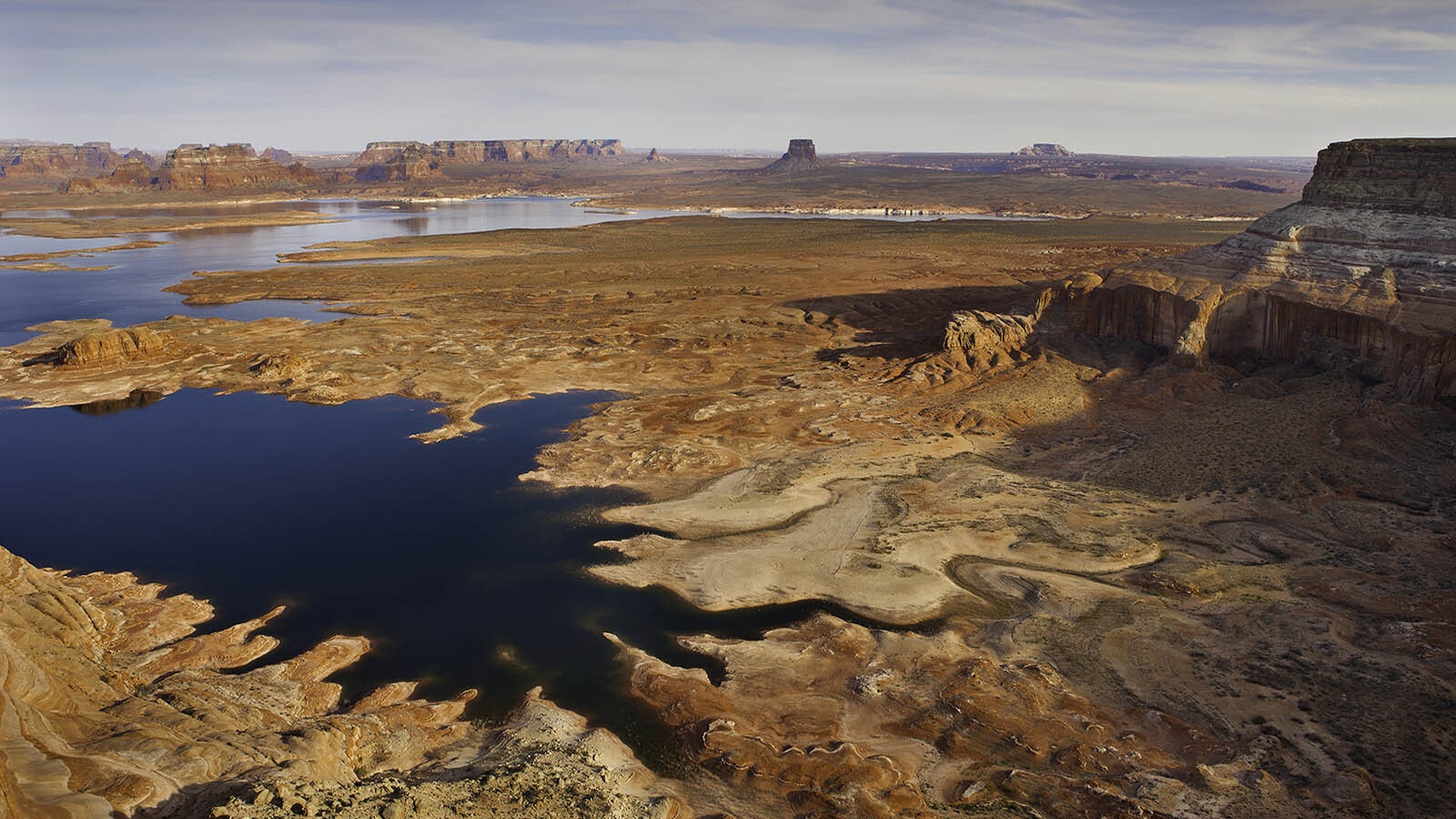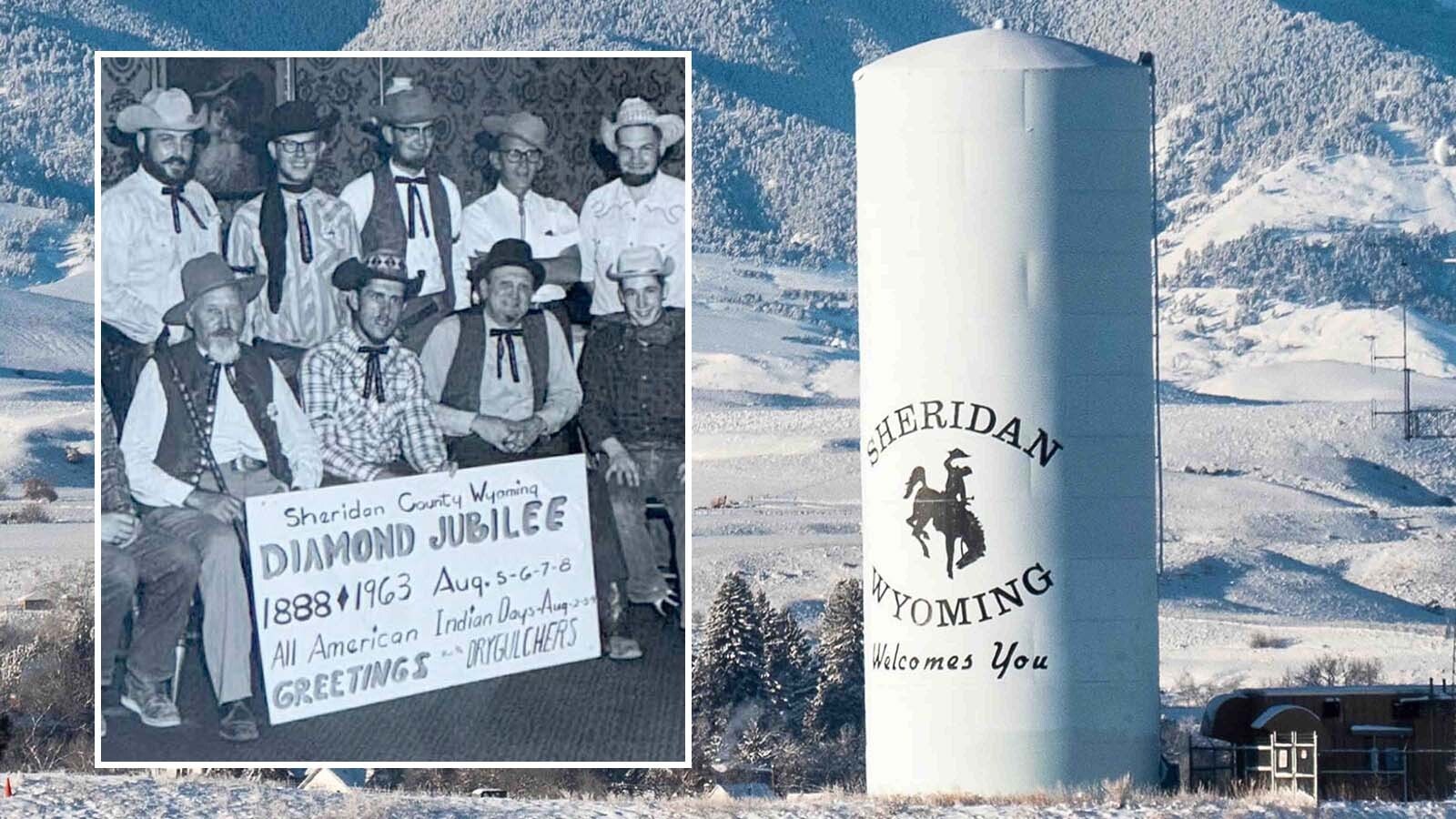From Wyoming, the growing crisis spurred by prolonged drought along the Colorado River through seven Western may seem like the distant troubles of others.
But Wyoming also is poised to be impacted by the strain of the crisis that some fear is approaching a “doomsday” scenario.
“What does it mean for Wyoming? Flaming Gorge is being used for what it was originally intended for, to buffer the system,” University of Wyoming professor Tom Minckley told Cowboy State Daily. “The ‘bank account’ (of the river’s water) is starting to run empty, and this is the reserve account.
“Now, they’re starting to go into the change drawers and see what’s there.”
Flaming Gorge Release
Earlier this year, 500,000 acre-feet of water was released from Flaming Gorge to ease the increasingly desperate need for water in Lake Powell, Lake Mead and elsewhere down the Colorado River Drainage, Minckley said.
An acre-foot is enough water to cover an acre of land in a foot of water.
Wyoming should expect to be asked for more releases from Flaming Gorge, said Minckley, a paleoecologist with UW’s Department of Geology and Geosciences.
Wyoming Legally Obligated
UW law professor Jason Robison agrees.
Along with several other states along the river’s main drainage at its tributaries, Wyoming is bound to the 1922 Colorado River Compact, he said.
“Wyoming is a part of the Colorado River Compact, and the compact imposes flow obligations on Wyoming,” he said. “What those flow obligations really mean to me is, Wyoming is connected to Mexico. Wyoming is connected to the other upper (Colorado River) basin states and the lower basin states.”
As water levels drop, there’s been talk of a “doomsday scenario” along the Colorado River, which is a major agricultural and hydropower lifeline for the Western United States and Mexico.
Prolonged Drought
Minckley in 2019 was part of a UW-led venture that retraced the route of the 1869 John Wesley Powell expedition down the Green and Colorado rivers.
That year was exceptionally wet. Most notably, a June storm dumped huge amounts of snow on parts of Wyoming.
“That storm caught us on our expedition and sent massive amounts of water downstream,” he said. “We were rafting on the melt runoff from that storm.”
However, one wet year hardly makes up for more than two decades of drought along the Colorado River and across the West, he said.
It All Flows From Wyoming
Wyoming has much of the high-altitude real estate which gets the snow that in turn feeds the Colorado River drainage, Minckley said. And even during good snowfall years, the extended drought has left the mountains struggling to feed the river.
“We’re in a 22-year-long drought. If the snow doesn’t come, Wyoming can’t send water downstream,” he said. “If the snow does come, the atmosphere is warm, so it’s going to take some of the water. And the soil is dry, so it’s going to take some more of the water.
“Everybody’s trying to figure out, ‘How do we manage this?’” he added. “Snowpack used to tell us something about the prospects for the coming year. Now, it doesn’t.”
And that complicates things, Robison said, because roughly 90% of the Colorado River’s water comes from snowpack in Wyoming and the other upper basin states.
Big Obligations
That amounts to some big obligations, Robison said.
Under the Colorado River Compact, the upper basin states are expected to provide 75 million acre-feet of flow per decade, as measured at Lees Ferry in Arizona, he said.
Mexico, the river’s end user, is entitled to 1.5 million acre-feet per year.
And along with the downstream states and Mexico, Wyoming has to bear in mind the water flow expectations of 30 Native American sovereignties, he added, including the Navajo Nation.
Why Lees Ferry?
Though its geographically “nowhere,” Lees Ferry was designated as a flow measuring point for a couple of reasons, Robison said.
First, it represents sort of the “narrow point in the hourglass” between the upper and lower basins of the Colorado River, he said.
Also, the river is accessible for taking flow measurements there. Elsewhere in the region, it’s typically running through steep canyons or gorges.
Century-Old Rules
Robison is an expert on the 1922 Colorado River Compact. He recently edited a book on the subject, published in time for the compact’s 100th anniversary. He and Minckley also recently attended a University of Arizona symposium on the document’s centennial.
However, things might get lively in Las Vegas when the Colorado River Water Users Association (CRWUA) meets Dec. 14-16 in Las Vegas. Robison will attend, and the meeting will bring together representatives from all the states and other parties involved.
“The centennial (of the compact) is arriving under some auspicious circumstances,” Robison said. It’s the middle of a drought and with ever-increasing demand on the river.
Not The Same River
Given the drought, as well as large cities and agricultural demands that didn’t exist in 1922, the Colorado is essentially a different river than it was when the compact was written and implemented, Robison and Minckley said.
That could raise the question of whether it’s time for a new set of rules.
Regardless, it’s going to take cooperation and “sacrifice” on the part of all involved, Robison said. In Wyoming, that’s likely to mean hard choices for agricultural irrigation along the Green River.
Meanwhile, Wyoming and the other Western states can’t operate in isolation, Robison said.
Water shortages are becoming a problem around the globe and “the eyes of the world” are going to be on the CRWUA conference and the parties’ resulting decisions, he said. It could become a template for how to handle potentially cantankerous matters of water rights and shortages.
That’s important, because water shortages could become flashpoints for conflicts around the world, Robison said.





